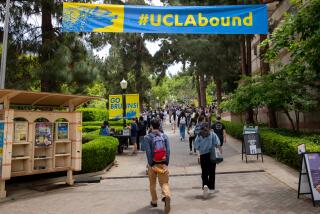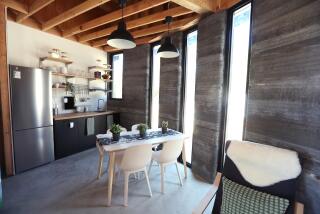Students seek their day in the sun
- Share via
WASHINGTON — Santa Clara University knew going in that it was not going to be easy taking on the likes of MIT and two-time champion University of Colorado in a national competition to design and build the best solar-powered house.
On the way to the National Mall, where this week’s Solar Decathlon is taking place, the trailer carrying Santa Clara’s prefabricated house broke down -- twice.
Then in the first round of judging, the school’s entry finished 18th out of 20.
Still, contest director Richard King said, Santa Clara has a good chance to win the U.S. Department of Energy’s third ever competition, which ends Friday. “Although they didn’t fare well in the architectural contest, they’re going to do well overall,” King said. Santa Clara does not have an architecture department.
Besides, winning isn’t everything, said Godfrey Mungal, dean of Santa Clara’s engineering school. More important is the chance to show that energy-saving, environmentally clean technology like solar power can work.
“I think for the school, there is definitely a larger picture. Sustainability is a big issue. . . on the campus,” Mungal said, noting that solar and wind power are being used at Santa Clara.
The contest is a part of the Energy Department’s effort to make solar energy cost-competitive with electricity generated from fossil fuels by 2015. Solar-powered homes would be connected to the electric grid, but ideally would produce as much energy as they consume.
“I personally see [2015] as a tipping point,” King said. “If we can get there, this is just going to take off. There’s no reason why every house that’s built in America or wherever isn’t a zero-energy home of some kind.”
Engineering, lighting, water heating and market feasibility are among the nine other event categories. Teams also compete on how much surplus solar energy their houses produce to run a street-legal, commercially available electric vehicle.
Points are awarded based on how many miles each team’s vehicle can be driven.
Santa Clara students financed their entry by raising $800,000 from businesses in the Silicon Valley, where the school is located. In a gamble, the students prefabricated their house on campus -- in two segments to be assembled some 3,000 miles away in Washington -- instead of building it on the Mall as most teams were doing.
The decision led to a near-disaster. The segments, loaded onto two trailers, weighed nearly 25 tons each, and two axles on one of the trailers broke before the rig left the school. That required a 200-mile dash for replacements.
Then, just west of Iowa, the replacement axles gave out.
With these and other delays, Santa Clara was almost four days behind schedule when it got to the Mall. But the structure went together smoothly.
“The most enjoyable part for me,” said Tim Hight, the team’s faculty manager, “has been the students and seeing this creation come from idea to reality and how they’ve stuck with it through these various bits of adversity.”
--
jordy.ya [email protected]
More to Read
Inside the business of entertainment
The Wide Shot brings you news, analysis and insights on everything from streaming wars to production — and what it all means for the future.
You may occasionally receive promotional content from the Los Angeles Times.










